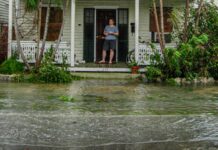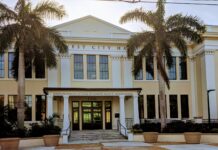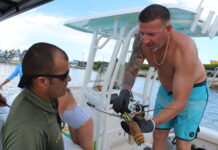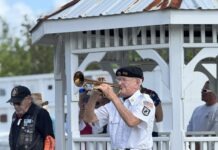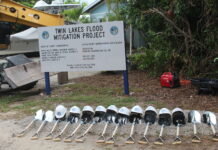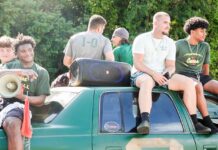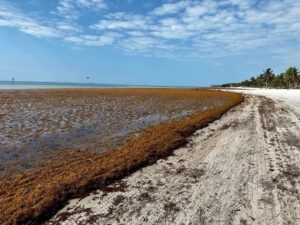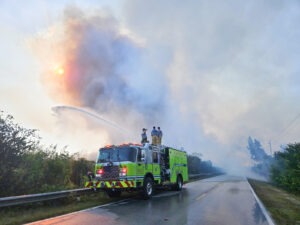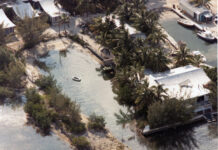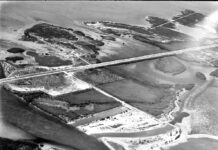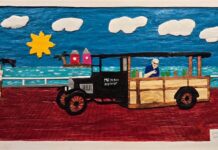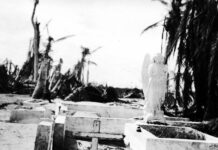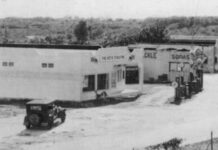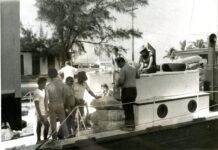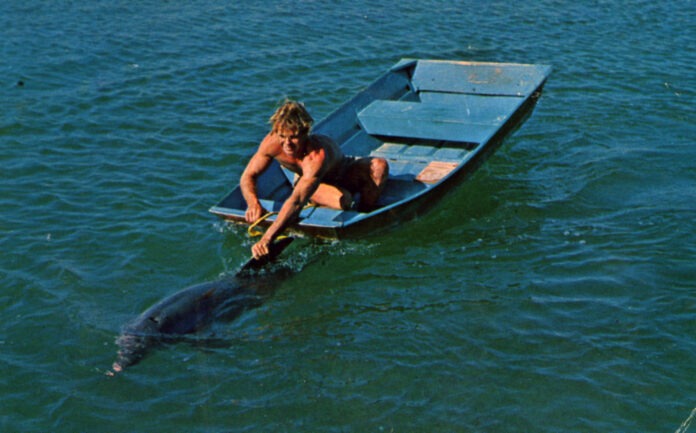
The island was called Ellis Island by the cartographer DeBramn in 1772. It was not the name that stuck. In Gerdes’1849 pamphlet, Reconnaissance of the Florida Reef and all the Keys, he wrote: “The string of islands from Tom’s Island to the West, except the last, larger one, is called Grassy Islands.”
Assuming the last, larger one was Key Vaca, Grassy Islands was not quite the name that stuck, either. When Charles Smith conducted the official government survey in 1872, he labeled it Grassy Key. That was the name that stuck. Why the name was chosen is something of a mystery. A U.S. Coast & Geodetic Survey field report from 1935-1936 stated: “Local information is that the key was named after an old settler and not because it was partially covered in grass.”
Of all the islands linked by the asphalt and bridges of the Overseas Highway, Grassy Key has a special story to share. Grassy Key’s unique contribution starts with a dark-haired man of Mediterranean descent who, though small in stature, left a footprint on the Florida Keys that was larger than life. Milton Santini was his name.
Santini was a fisherman. What brought the man notoriety was his skill at catching dolphins — not the catch of the day, mahi-mahi dolphin served as fingers, sandwiches and tacos — but Flipper dolphin. When Santini heard that the Miami Sea Aquarium offered $100 per live dolphin delivered to Tavernier or Marathon, he started chasing them down.
During the 1950s, when sea aquariums began to spring up around the country, Santini made a
name for himself by capturing the marine mammals. When taking his skiff and patrolling the seagrass meadows, cuts, banks and shallows of the backcountry, he had a partner in a companion skiff cruising beside him. If a pod was sighted, the two skiffs sped across the water in hopes of “bulldogging” the dolphins or using the two boats to separate one of them and chase it into the shallows where a net could be thrown over the animal.
The dolphin’s alarm would scatter the pod into deeper waters if they missed. When they were successful, the skiffs would tow their catch up on the seagrass shallows so the two men could jump out and race to secure it. One thing they had to learn was that when they managed to catch a dolphin, they had to act quickly in order to get its head to the surface and prevent it from drowning.
Santini reached legendary status when he caught the world’s most famous dolphin, one he fished out of the Florida Bay in 1955. He named her Mitzi. Mitzi was a natural performer and quick to learn tricks. He considered the dolphin more intelligent than most people he knew.
Mitzi gained notoriety when she was cast to portray the beloved character Flipper. One of several dolphins to perform the role, Mitzi was said to be the most photogenic of the bunch.
By 1962, calls for wild dolphins came in from as far away as Texas and Michigan. According to a Miami Herald story dated Nov. 30, 1966, the price Santini was being paid for a wild dolphin had increased. He sold them to aquariums for between $500 and $1,500 each. As his business grew, Santini needed to expand his operation and purchased Campbell’s Grassy Key Lodge. He dynamited the limestone substrate along the shore of his new property to create holding pens. The pits were flooded and partitioned off from the open water.
Mr. Santini is remembered as a kind man by the local children; he would let them slip into the pens and swim with the dolphins. Sometimes, he charged them a quarter. At the Grassy Key property, he opened Santini’s Porpoise School, where Mitzi was one of as many as 15 performing dolphins. Mitzi was the star of the show until she died of heart failure in 1972. Santini was said to have been heartbroken by the loss and sold his Grassy Key property to Wometco Enterprises.
It was 1972, too, when the Marine Mammal Protection Act was passed. Prior to 1972, any Tom, Dick or Milton could race a skiff across the water and capture a wild dolphin. After the act was passed, it became illegal to harass, capture, injure or approach a marine mammal, be it a dolphin, whale, seal, otter or manatee.
Wometco Enterprises cashed in on Mitzi’s notoriety and opened Flipper’s Sea School, showcasing trained dolphin acts for the public until Jean Paul Fortem-Gouin purchased the property in 1977. A cetacean conservationist, Fortem-Gouin closed the property to the public, renamed it the Institute for Dolphin Research and studied the language and behaviors of dolphins.
Considered a leader in the rights of whales, when voluntary cessation of the hunting of some species was achieved, ownership of the property was transferred from Fortem-Gouin to General Manager Jayne Shannan and Mandy Rodriguez, the facility’s head trainer. Shannan and Rodriguez re-christened the facility the Dolphin Research Center.
Located at MM 59, it has been open to the public since 1984 and continues to serve as an educational facility promoting marine mammal awareness. If you are old enough to have grown up watching the adventures of Flipper on television, you can pay your respects at Mitzi’s grave which can be found on the property.
While driving west down the highway, the two giant dolphin statues in the parking lot make it hard to miss. On the contrary, what is easy to miss is the “bridge” linking Grassy Key to the next island in the chain, Crawl Key. The two islands were connected by a line of railroad fill back when the right-of-way for Henry Flagler’s train was being developed. When you pass Banana Boulevard, which will appear on the oceanside, you are on Crawl Key. Grassy Key and Crawl Key are also part of the collection of islands that fall under the Marathon umbrella. Marathon has a much larger story to tell.

